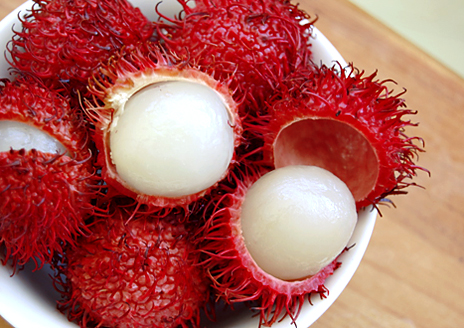The rarest fruits in the world
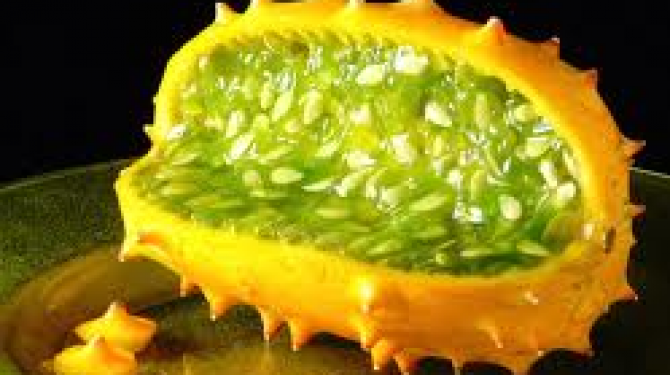
Source: listas.20minutos.es
Bored of bananas? The apples that give it apathy? Tired of oranges? If you are trying to broaden your horizons when it comes to fruits, whether you are traveling the world, or just looking for a new, fresh-looking edible piece, this list of strange fruits will surely give you a lot of useful information. . The Internet has erased borders and connects us with the rest of the world by approaching typical products from other countries, such as native foods. Nowadays with the global distribution of products it is often possible to find in our neighborhood the strangest and most unthinkable foods. New flavors, textures, colors and aromas are ready to be discovered and tasted by the most curious palates from around the world. If we have the opportunity to travel to an exotic destination we will not only enjoy it when swimming in turquoise waters or sunbathing. You also rest and relax when you can taste the cuisine and many of the exotic fruits that are in place. It will be a real challenge for you to be very attentive the next time you make your purchases and for you to try to find them at your local supermarket. For those hot summers where something refreshing is necessary, we have selected the 10 strangest fruits we should try.
TOP 14:
ACKEE
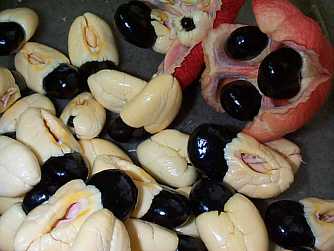
The Ackee comes from Africa and also in Jamaica is the national fruit. It can only be eaten when it is ripe because otherwise it is very toxic, it eats everything except the seeds and the pod. It is served cooked as a side dish of fish and meat that you can buy from the online chef seafood supermarket.
TOP 13:
Pichichio
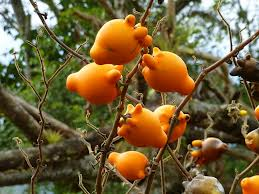
Its medicinal use in the treatment of athlete's foot and sinusitis is reputed. It is also used as a relaxant and to treat irritability. It is also used as a detergent. In Taiwan it is used as a religious offering.
TOP 12:
White strawberry
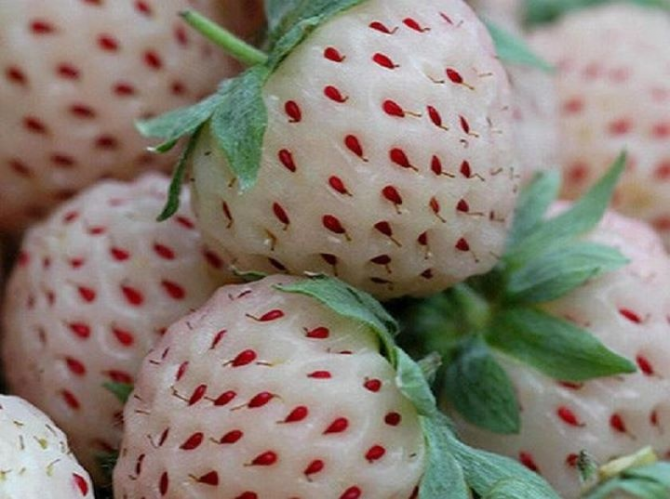
Originally from Chile, this fruit grows in North America and South America in a wide variety of climates and soils. Its flavor is similar to that of the common strawberry but with a touch of pineapple taste.
TOP 11:
Durian
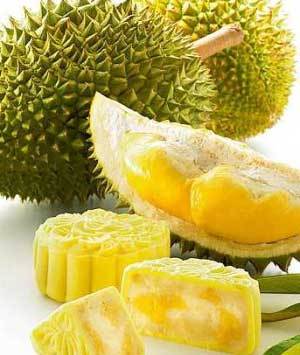
Durian is a native of Brunei, Malaysia and Indonesia. He is also known as the "king of fruits." Durian has a very particular smell that some describe as stinky, garbage, latrine or dead animal. But if you have to say in your favor that it has a unique and delicious flavor. Its appearance is quite peculiar, its bark is covered with thick thorns, quite hard. The color of this fruit ranges from brown, yellow or green. Because of its characteristic unpleasant smell, comparable to the smell of garbage or sewage, the fruit is prohibited in hotels and public transportation in Southeast Asia. You can smell it from meters away. However, the whole experience of enduring its bad smell is worth it, considering the absolutely divine taste of Durian. The inside of the fruit is divided into 5 compartments full of very large seeds that are also edible, but for this you have to roast them first. The color of the pulp is yellow-orange and its texture is creamy.
TOP 10:
Kumquat
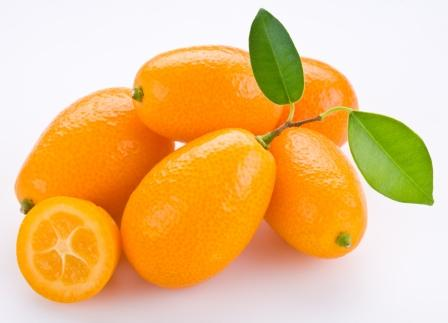
Dwarf orange, Chinese orange, kumquat or quinoto is native to China. And they are a genus of fruit trees and shrubs of the rutinaceae family, closely related to citrus fruits. They are small edible fruits such as oranges that grow on a tree. As with most fruits of the citrus family, these small Chinese oranges are eaten raw. They are often used in the manufacture of jams and jellies, and also in alcoholic beverages. Taiwanese people usually add it as an ingredient when they prepare tea, while others boil it and use it as a sore throat remedy. The fruits have the peculiarity that their endocarp is formed by numerous vesicles full of juice. Kumquat is the smallest fruit among citrus fruits and the only one whose peel is edible. Kumquat is more delicate and fragile than oranges, since its skin is thinner. At room temperature it is perfectly preserved for a period of 5-6 days, but this period can be increased to approximately three weeks by storing it in the refrigerator.
TOP 9:
THE PÉRSIMO
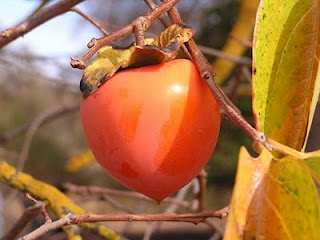
Suggested by my friend Russian Boy: who says that this fruit is very sweet
TOP 8:
Pony
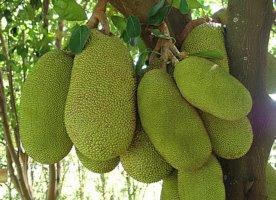
This fruit is native to southwestern India, Bangladesh, the Philippines and Sri Lanka. It is a fairly common fruit for Asia and Australia and considered one of the fruits of the largest tree in the world. The pulp is juicy, and around the seeds they taste similar to pineapple, but softer. Jaca is the largest cultivated tree fruit in the world, reaching up to 35 kg in weight, about 80 cm long and 40 in diameter. The outside of the fruit is green or yellow when ripe; The interior consists of large edible bulbs of yellow meat, which includes a smooth, oval, light brown seed. There can be up to 500 seeds in a single fruit. Apart from canned jackfruit, it is also available as sweet and in treats. Tree wood is used for the manufacture of various musical instruments, while fruit is a common ingredient in many Asian dishes. While the tree is native to India, it has been planted in the tropics around the world but is only consumed daily in Asia. In southern India, the production of jackfruit is similar to that of guineo and mango. It grows best in wet areas and well drained soils. In America it is more popular in Brazil, Jamaica and Suriname. In Puerto Rico it is sown for its attractive foliage and for its exotic fruit, which is mostly consumed by immigrants from India. Jaca is the national fruit tree of Bangladesh.
TOP 7:
Passion Fruit or Passion Fruit
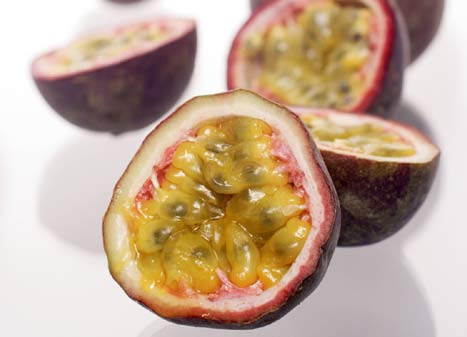
While the Passion Fruit or Passion Fruit (also known as Purple Granadilla, Passionflower or Fruits of the Passionflower) tend to be increasingly common, it deserved a place on this list. The passion fruit has a soft and juicy interior full of seeds, which is commonly found in juices to improve its flavor. There are two types of passion fruit: the golden one (passion fruit), similar to a grape and the dark or purple passion fruit (gulupa), comparable in size with a lemon. However, the latter have been reported as mildly toxic. This fruit has an ovoid shape similar to a chicken egg, fleshy, with yellow or violet skin and orange depending on its maturity and variety. Its texture is smooth and bright when it is ripening and wrinkled when ready to eat; Its pulp has a first thin layer attached to the crimson skin, followed by a second thin white layer that protects the seeds inside. The juice of the fruit (obtained by pressing the pulp or processing it) is often too thick to drink directly; It is usual to combine it with other fruit juices, yogurt, milk or just water. Its high sugar content makes it unnecessary to use some type of sweetener.
TOP 6:
African cucumber or Kiwano
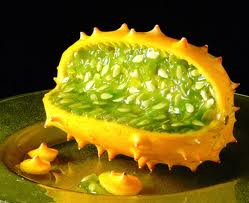
Kiwano belongs to the Cucurbitaceae family, which includes numerous and varied fruits, usually large and very hard crust, such as watermelon and melon. It is actually a wild fruit, very aromatic and tasty. It is also known as "cuckold or wild cucumber." This plant is cultivated for its edible fruit in the form of an oval melon and with thorns that look like horns, of exotic taste, between kiwi and banana when consumed with sugar and when consumed as a salad it is similar to cucumber but more refreshing. The yellow fruit when ripe is also used as decoration in table arrangements. Although it is native to Africa where it is grown mainly in the south and center of the continent, today it is also cultivated in New Zealand, Australia, Israel, Chile and the United States. The fruit is green at first and orange with darker areas when ripe. The interior is striking juicy green pulp with white pipes similar to those of cucumber.
TOP 5:
Carambola or star fruit
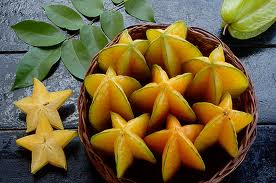
The carambola is an exotic fruit highly valued in international markets, popularly known as "star fruit" or "star fruit". This fruit is native to Indonesia, India and Sri Lanka. The carambola comes from the tree of the same name, a kind of tree with pink flowers. The fruit, golden yellow in color, is crispy, sweet, flavored with pineapple, apples and kiwis combined. Depending on its origin, it receives different names: in the Dominican Republic, "five fingers"; in Costa Rica, "tiriguro"; in Brazil, "caramboleiro" and in Venezuela, "chinese tamarind" or "sweet tamarind". It is a fruit with a very beautiful shape, widely used in the decoration of various exquisite dishes. Its pulp is juicy, a bit fibrous and acidic. When the Carambola matures its flavor is very sweet and refreshing. It has nutritional properties, because of its contribution of vitamin A and vitamin C, which contribute to reducing the risk of cardiovascular diseases, its consumption is highly recommended for children, young people, adults, athletes, pregnant women or nursing mothers and the elderly. . It can be eaten both raw and cooked, and it is delicious dressed with a vinaigrette sauce.
TOP 4:
Mangosteen
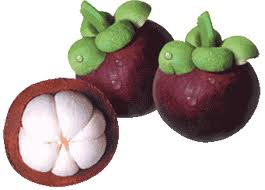
This exotic fruit is native to the Sunda Islands and the Moluccas. Mangosteen is an evergreen tree that produces irregularly shaped fruits. The fruits are purple, which could be described as citrus but with a touch of peach. It is a type of small fruit with a powerful dark purple color that has a peculiar and exotic flavor. This fruit is increasingly being seen in our supermarkets and delicatessen stores and therefore it is essential that we know that as a good fruit it will help us when it comes to achieving good health, since it contains very low amounts of calories, just like we It provides high doses of vitamin and fibers. It is rich in antioxidants, some scientists even argue that it can reduce the risk against certain diseases. It is also rich in flavor. In its region, it is widely used to lower fever, treat different infections: on the skin, in the urinary tract, exemas and also to prevent and cure infections. What makes this fruit highly useful, is that both its bark and its interior contain healing properties. The main property of mangosteen is to have a high content of xanthones (or xanthones), which are natural chemicals with a high antioxidant and therapeutic power, resulting very common in its popular use.
TOP 3:
Lychee
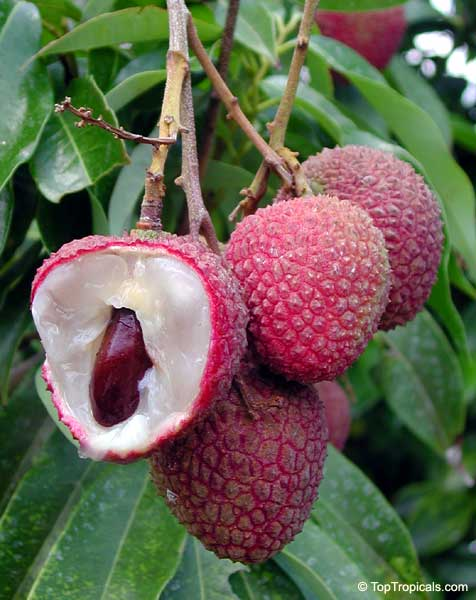
This fruit of Lychee, Litchi, or Litchis is native to southern China, India and Taiwan. Today there are large plantations in China, India, Pakistan, Brazil, Taiwan, Australia, Madagascar, South Africa, Burma, the Philippines. The fruit has begun to appear in markets around the world, refrigerated or preserved with its flavor intact. Coming from an evergreen tree, lychee or litchi are small white meat fruits, covered by a red bark, rich in vitamin C and with a grape-shaped texture. The litchi tree is low and attractive, about ten or twelve meters high, with the trunk of low branches that have a dark brown bark and a rounded crown. This tree is very colorful when it is in full bloom in February. It is usually consumed as a fresh fruit in salads and fruit salad, but for some time they are also being included in dessert recipes since it is very sweet, exotic reminiscent of grapes and with a certain rose scent.
TOP 2:
Pitaya or dragon fruit
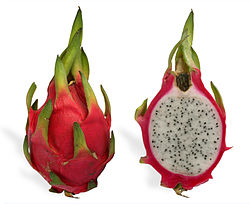
Also known as Pitaya, the dragon fruit lives up to its name in appearance. From the outside, it looks like a fire flare inside a museum of modern decorative art, and its interior makes us imagine what a dragon's body would look like inside. Although they originally come from Mexico, they are quite popular in the eastern world and now their production and popularity has grown strongly in more remote places such as the islands of Indonesia, areas of South Asia, in Australia, and even in lands as far away as Israel . It is the fruit of a cactus, and its flavor is described as the taste of a watermelon, although it looks like vanilla ice cream sprinkled with black dots.
TOP 1:
Rambutan
